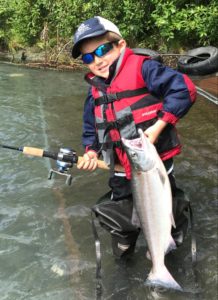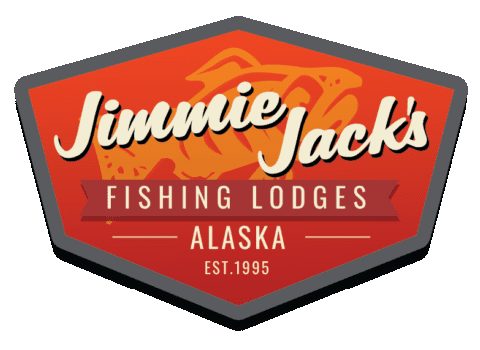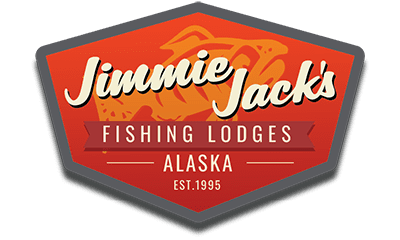 Fishing for sockeye salmon on the Kenai River is an exhilarating experience for any angler. With a large run of sockeye salmon passing through the river from late June to the end of July, it’s no wonder that many fishing enthusiasts coming to Jimmie Jack’s Fishing Lodges are eager to learn the best techniques to catch them. In this guide, we’ll cover the essentials of rigging your setup, selecting the right weight, choosing the appropriate line, and more. So, let’s dive in and discover the secrets to successful sockeye salmon fishing on the Kenai River! But first, check out this informative video to go with our post!
Fishing for sockeye salmon on the Kenai River is an exhilarating experience for any angler. With a large run of sockeye salmon passing through the river from late June to the end of July, it’s no wonder that many fishing enthusiasts coming to Jimmie Jack’s Fishing Lodges are eager to learn the best techniques to catch them. In this guide, we’ll cover the essentials of rigging your setup, selecting the right weight, choosing the appropriate line, and more. So, let’s dive in and discover the secrets to successful sockeye salmon fishing on the Kenai River! But first, check out this informative video to go with our post!
Rigging Your Setup for Kenai River Fishing
You may be surprised at how simple the rig we use to target sockeye salmon is. In the main stem of the Kenai River, we use a 3/0 to 4/0 octopus hook, such as the Gamagatsu, which provides excellent hooking ability. You should keep several leaders tied in order to switch out fast. Sharp hooks will be your number one priority. Check regulations because certain areas, like the Russian River, have a smaller hook-to-shank size limit.
Choosing the Correct Sinker
The weight of your sinkers depends on the current conditions of the river—no pun intended. Opt for the minimum weight to keep your fly near the river bottom but not become stationary. The idea is that you want it to drift (more on that later). For sockeye salmon, which tend to swim about five to ten feet off the bank—or even closer if the current is strong—it’s crucial to achieve a natural presentation in the sight of the fish. Using multiple large split-shot weights allows you to adjust the weight according to the specific fishing spot and conditions.
Drifting Your Bait
To entice sockeye salmon, cast your line straight out at a 90-degree angle from the riverbank. Allow your fly to drift downstream while maintaining contact with the riverbed. You should feel the bait tick along the bottom without getting snagged. You will have to dial this in depending on the current speed and where you lay your cast. When you feel a sudden stop, a fish likely has taken it. Quickly jerk your rod to set the hook and let the fight begin.
Selecting the Appropriate Line
Sockeye salmon in the Kenai River typically range from six to eight pounds. Considering the strong current and the fish’s ability to make powerful runs, it’s recommended to use a 20 to 25-pound test line. While some may attempt to catch sockeye salmon on lighter lines, the reality is that these feisty fish can easily snap lesser tests, resulting in lost catches and frustrating experiences.
Playing the Fish and Landing
When hooked, sockeye salmon will put up a spirited fight, especially in a fast current. Properly landing the fish is crucial to ensure a successful and safe landing while minimizing disruption to fellow anglers. Avoid allowing the fish to run long distances downstream, jump over obstacles, and potentially interfere with other anglers. A balance must be struck between enjoying the fight and landing the fish efficiently, and you typically want to fish the same way as those around you.
Jimmie Jack’s Alaska Salmon Fishing Lodges
 Fishing for sockeye salmon on the Kenai River offers an incredible adventure for anglers of all levels. Using the proper rig, selecting the appropriate weight, and employing a suitable line will significantly increase your chances of landing these prized fish. Remember to be considerate of other anglers and prioritize the overall experience, whether you choose to keep your catch or practice catch-and-release.
Fishing for sockeye salmon on the Kenai River offers an incredible adventure for anglers of all levels. Using the proper rig, selecting the appropriate weight, and employing a suitable line will significantly increase your chances of landing these prized fish. Remember to be considerate of other anglers and prioritize the overall experience, whether you choose to keep your catch or practice catch-and-release.
If you’re seeking more information or want to plan your fishing trip on the Kenai River, don’t hesitate to contact us at Jimmie Jack Fishing or explore our website and blog for additional resources. Tight lines and happy fishing!

